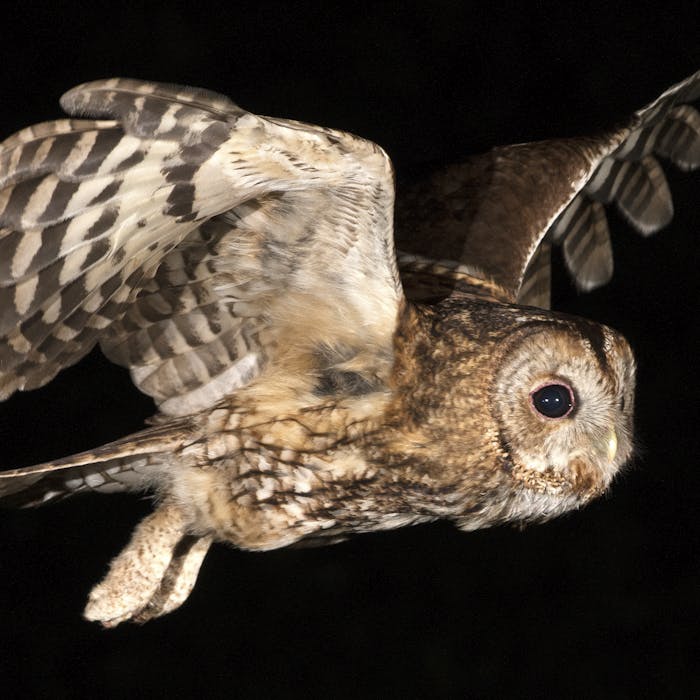
Tawny Owl - our most familiar owl
The Tawny Owl is a species that favours woodland habitats, but it may also breed in larger rural and suburban gardens. Our most familiar owl, the Tawny Owl is found across Britain but is absent from Ireland.
They are responsible for the most commonly heard owl sound, the classic, nocturnal ‘twit twoo’ call, with which most people are familiar. This call can be heard from late autumn and through the winter months, underlining that this is a species that breeds early in the year.
Tawny owls are by far the most common owl species in the UK, with an estimated population of 50,000 pairs.
The tawny owl is an owl the size of a woodpigeon. It has a rounded body and head, with a ring of dark feathers around its face surrounding the dark eyes. Typical wingspan is up to one metre.
Males are usually smaller than females.
Tawny owls in the UK are mainly reddish brown above and paler underneath. It is a widespread breeding species in England, Wales and Scotland. They seem reluctant or unable to migrate across water and are therefore absent from many offshore islands. Birds are mainly residents with established pairs probably never leaving their territories. Young birds disperse from breeding grounds in autumn.
Mice and voles are the tawny owl’s main food source. These nocturnal hunters silently swoop down on their unsuspecting prey, plucking them from the forest floor. Sensitive sight and hearing allows owls to locate rodents, while their wing feathers have a soft furry edge that allows for soundless flight. They will take other prey on occasion, including birds, amphibians, young rabbits and even insects and worms when food is scarce.
Their typical lifespan is 4 years. They normally mate for life and prefer to nest in tree cavities.
Further reading
Links to external websites are not maintained by Bite Sized Britain. They are provided to give users access to additional information. Bite Sized Britain is not responsible for the content of these external websites.
